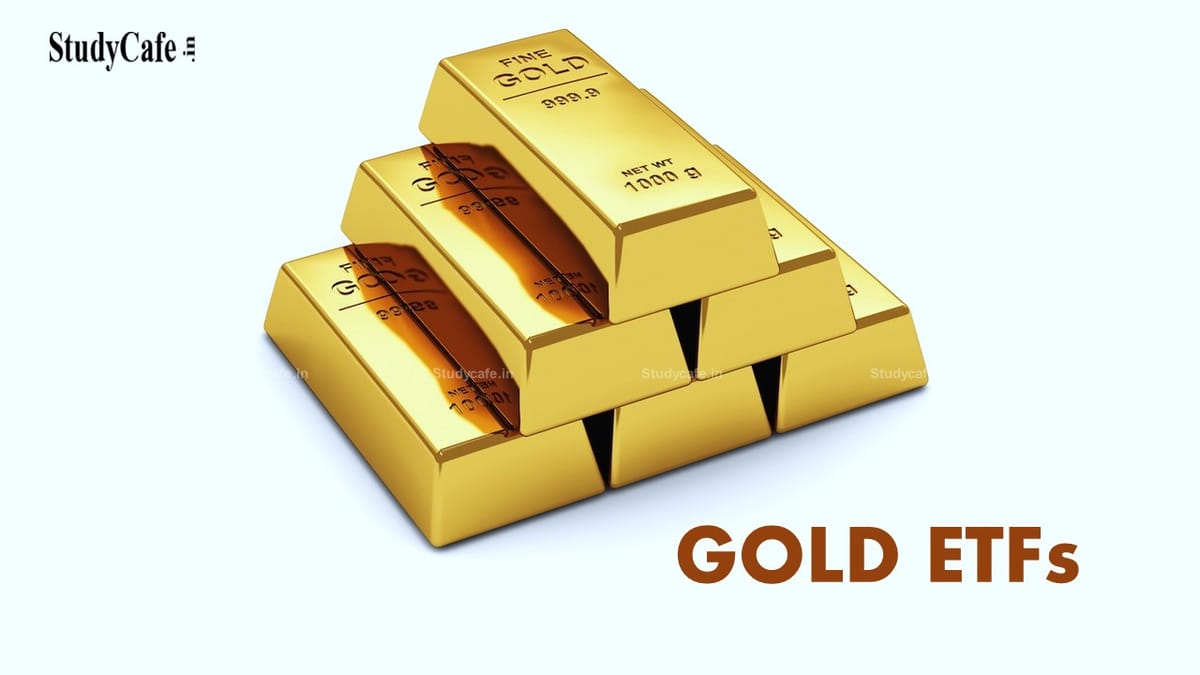Deepshikha | Dec 20, 2021 |

Gold ETFs: Features, Benefits and More
Indians have had a great attraction to gold for generations. India’s first gold exchange-traded fund (ETF) was created in 2007. (Gold BeES). These ETFs have gold as their underlying asset. Gold ETFs also provide you access to the Indian gold market.
Gold ETFs, or Gold Exchange Trade Funds, are open-ended mutual fund schemes based on the ever-changing price of gold. Physical gold, on the other hand, does not yield a profit. Furthermore, the costs of producing real gold are substantial. Gold ETFs allow investors to participate in the gold market. They are a fantastic long-term investment option for investors wishing to fight inflation.
Furthermore, as compared to equities, gold is a less volatile asset. 1 gram of gold is equal to 1 Gold ETF unit. As a result, you get the best of both worlds: stock trading and gold investments. Because some fund firms profit from gold bullion, they must maintain a constant eye on market performance. Gold ETFs’ value rises and falls in lockstep with the price of actual gold. They not only don’t compromise on purity, but they also guarantee consistent supply across the country.
Gold ETFs are appropriate for individuals who want to diversify their portfolio by including gold exposure. It’s a low-risk investment that’ll appeal to cautious investors. The funds will be used to purchase standard gold bullion with a purity of 99.5 per cent. Even when traded on stock exchanges, gold ETFs are a low-risk investment. Individuals who do not want to pay for storage and additional taxes associated with actual gold can invest in gold ETFs.
Physical gold serves as back-end security for Gold ETFs. When you buy a Gold ETF, for example, the person or business on the back end is buying gold. They also provide investors with assurances concerning the quality of gold.
For example, the Gold BeES, which is listed on the NSE (National Stock Exchange), closely monitors the current market price of gold, known as spot pricing. The National Stock Exchange (NSE) authorises an ‘Authorised Participant or Member,’ usually a significant company or firm, to handle the buy and selling of gold to create ETFs. The cost of gold and ETFs remains constant due to constant trading and regulation by the ‘Authorised Members.’
1. By submitting your PAN, ID evidence, and proof of residency, you can open a Demat account and a trading account online.
2. Choose a Gold ETF and place an order. There’s also the option of investing in mutual funds that have a gold ETF as an underlying asset.
3. You will receive an email and a phone call confirming your order.
4. During the transaction, a small brokerage fee will be deducted.
In case of any Doubt regarding Membership you can mail us at contact@studycafe.in
Join Studycafe's WhatsApp Group or Telegram Channel for Latest Updates on Government Job, Sarkari Naukri, Private Jobs, Income Tax, GST, Companies Act, Judgements and CA, CS, ICWA, and MUCH MORE!"